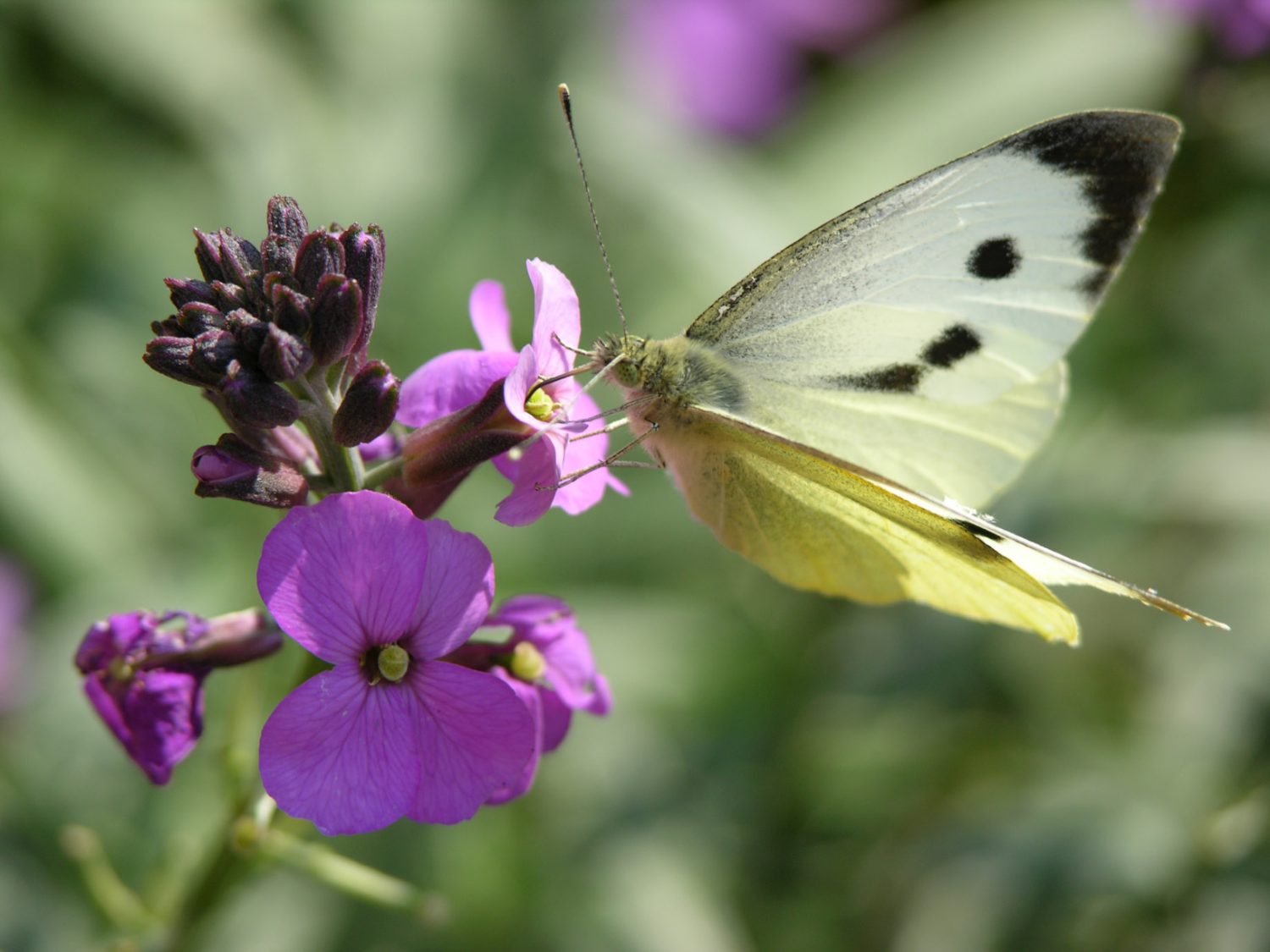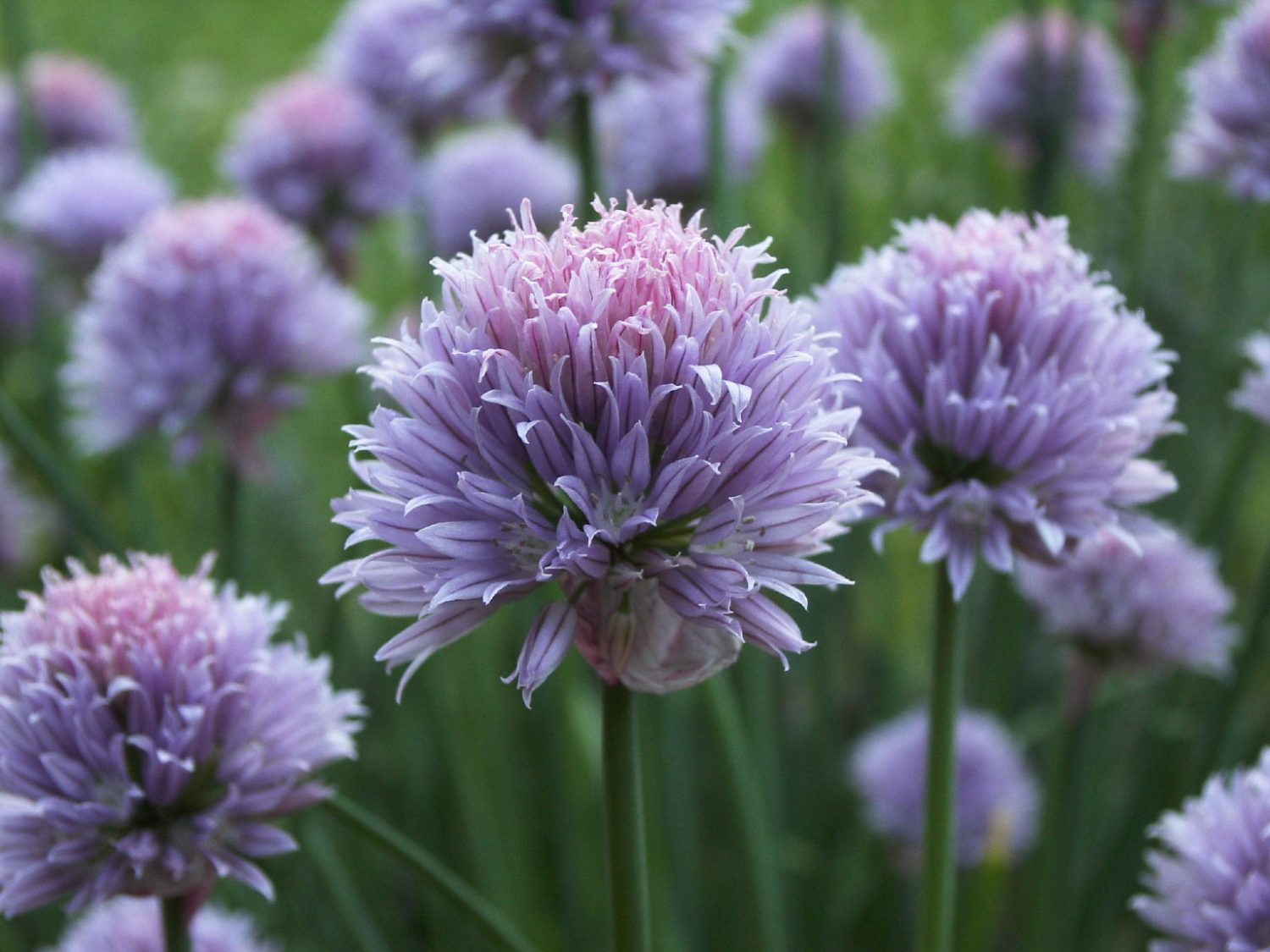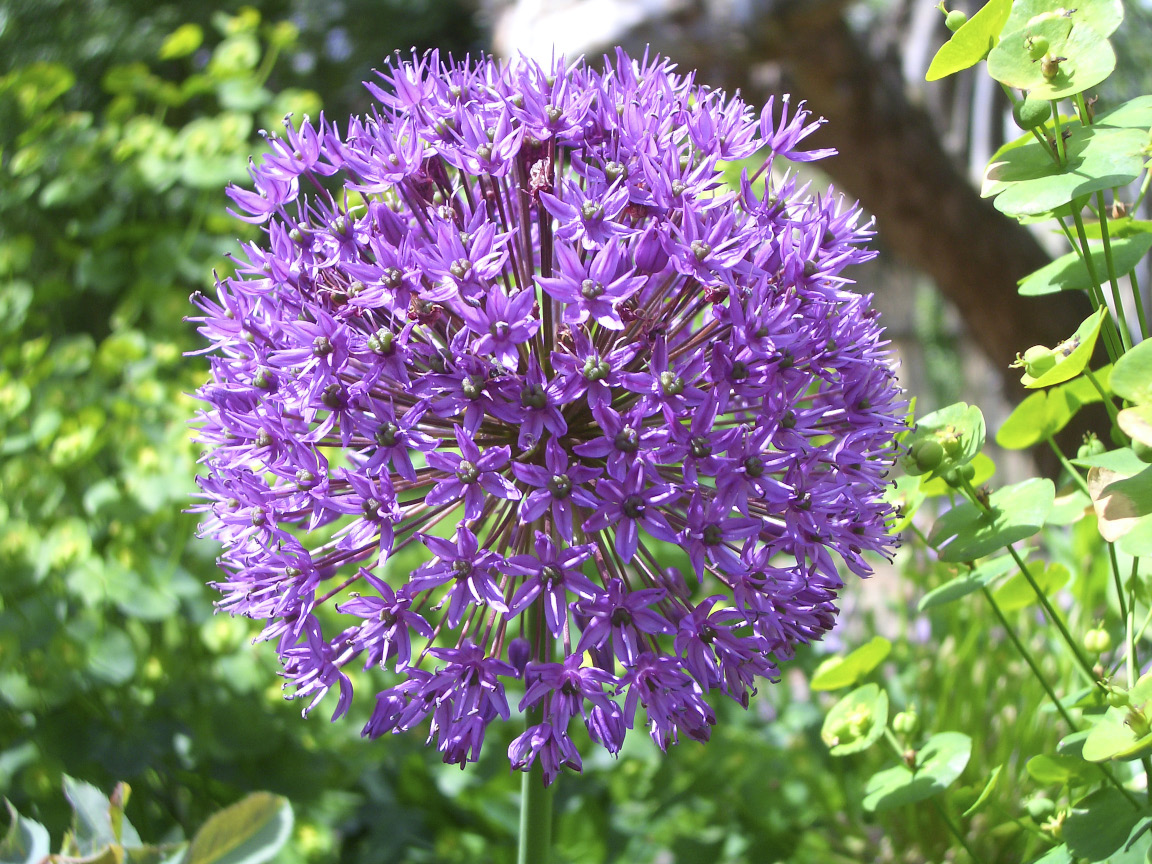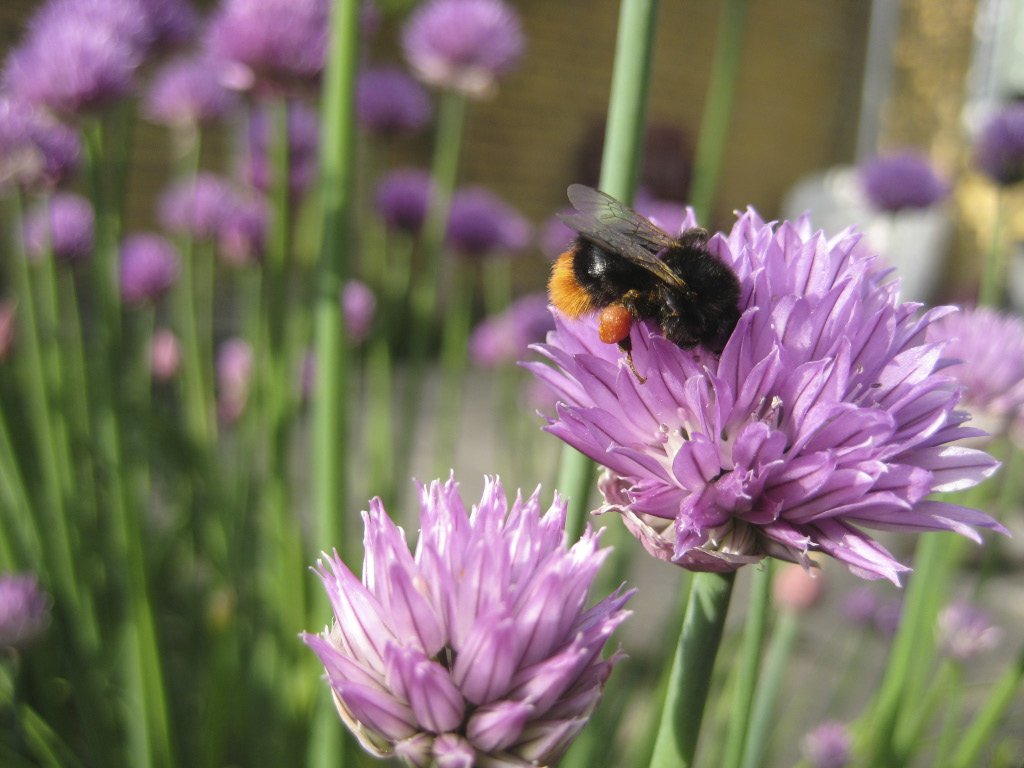Monocultures are lonely places, communist states filled with row-upon-row of the same vegetables, grown for a single purpose. No unruly weeds or maverick flowers allowed. There are advantages to this if you’re growing a commercial crop but it’s an unnatural way to cultivate plants and will eventually – as with most communist regimes – lead to problems. Soil nutrients are depleted and pests and diseases can reach biblical proportions if not sprayed with chemicals. In our own plot, a similar scene could be unfolding in miniature. It is labour-saving to grow strict rows of just one thing in each bed, but ultimately it’s not the most healthy way. Crop rotation helps to combat this, if you can be organised enough. A prettier way to avoid using chemicals (and, if like me you can’t remember which phase of the rotation you’re in), is to introduce some companion plants to your plot.
Permaculture follows a more natural, ecologically based method of growing edible food. The most natural form is ‘forest gardening’, which isn’t – as I like to imagine – growing crops in a forest, but replicates the hierarchy of species naturally found in a woodland environment, so that everything gets the right amount of light and nutrients. The theory is that a more natural ecosystem will look after itself, produce less waste and need less labour. Polyculture is a form of permaculture that means growing crops together in the same space. It’s a friendly, diverse and beautiful way to grow edible food.
The layout
When I first inherited my vegetable patch – a rough fenced off square of weeds – I created beds in a random (random is a kind word for them) fashion, and edged them with herbs and low-growing companion plants. I found that good edging plants turned out to be chives, parsley and marigolds and occasionally I’d use a row or two of a low-growing crop – dwarf beans or lettuce as dividers. Nearly everything else I tried – golden marjoram, purple sage, lavender – either became rampant, or too big and woody. Paths disappeared and crops rampaged about in a happy jumble. It looked wonderful in June, but by July I had to cut my way in and out of a glorious jungle. We installed raised beds, I tamed my expectations and the plants tried their best to stay within their confines. Raised beds don’t have to be rectangular – they can be almost any shape – circular, half moon, triangular, or even part of a larger complicated shape or pattern, as in a parterre or knot garden. The advantage of using beds with definite shapes, whether raised or not, is that it is easier to keep the whole thing under control and free of weeds, with clear paths for access. If you want to create a naturalistic look, or are growing vegetables among your flowers in a true cottage garden style, plant in drifts and make each group of plants a tear drop shape, so that one variety blends into the next, and crops that go well together are next to one another.
Good companions
Some crops are happy to share a bed, others will complain. A few (endearingly called ‘nurse’ crops) will even look out for the others and offer physical or chemical protection. Broad beans are used to protect emerging potato plants from the wind and late frosts, French marigolds (Tagetes) are traditionally grown among tomatoes to ward off whitefly. Leguminous plants like peas and beans trap atmospheric nitrogen in root nodules and make it useable, so leave the roots of peas and beans in the ground to benefit the next crop.
There’s an old Native American bed-sharing technique called The Three Sisters, involving sweetcorn, squash and climbing beans. They all need the same rich, moisture retentive soil, but the beans add nitrogen and use the sweetcorn for support, the squash has large leaves that act as a weed suppressant and provide shade at the roots of the others. Individually, these crops take up a lot of ground but, because they use different parts of the space, they can all be grown together in just one bed. In theory this combo sounds ideal, but in reality it can end up as a huge mess (that’s sisters for you). Make sure your beans and squash aren’t huge, vigorous varieties that will swamp the corn.
Alliums make good companions for many crops, as their strong smell confuses pests that are drawn to particular plants. Carrots interspersed with chives, leeks or onions will deter carrot root fly. Herbs are also very useful. Coriander and chervil will repel aphids, fennel or dill are good among cabbage and lettuce (don’t use both or they’ll hybridise and you’ll end up with unsavoury ‘dennel’ or ‘fill’…). These umbellifers will also attract pollinators and predatory wasps.
Beneficial bugs and beasts
To encourage beneficial pollinating insects into your plot, plant nectar-rich flowers like ‘Poached egg flowers’, sweet peas and Verbena bonariensis. Deter Cabbage White butterflies from brassicas with a ‘trap’ crop of nasturtiums. This works best when the nasturtiums are planted away from the cabbages etc, otherwise they tend to go on to both…
Birds are very useful in the veg patch (but put a cage around your fruit). All birds feed insects to their young in spring and, although birds will also eat your seeds, their bug-catching role in spring is very useful. Attract them by growing plants with good seed heads – poppies, sunflowers, cirsium and teasel.
When companions fall out
Self-seeding, nectar-rich flowers look gorgeous popping up serendipitously all over your plot – at first. Once you’ve allowed this to happen for a few seasons you may find yourself swamped in a tangle of rampant nasturtiums and thickets of African marigolds. I’ve let crocosmia creep in too (what was I thinking?!), and a forest of Verbena bonariensis. It looks wonderful but it can be a struggle to find the edible crops…
In a multi-crop environment it’s tricky to work out which plants are weeds and which are prized seedlings; before you’ve had time to reach for your hoe the weeds can take over a newly cultivated patch. The textbook way to manage the rash of weeds that spring up in newly turned earth is to prepare the seed bed and leave it for three weeks, then slice the seedlings off with a nice sharp hoe (you could sharpen your hoe during the three week break). It needs to be sharp so that you don’t disturb the soil again – or you’ll have to leave it another three weeks. Once the bed is clear of weeds, sow your crop and – according to the textbooks – a clean, weed-free row of seedlings should appear.
Growing flowers among your vegetables (or in my case, vegetables among the flowers) is a healthy and productive thing to do. Transforming a dull vegetable plot into a naturally flourishing and environmentally friendly space will bring appreciative visitors of all kinds – people and pollinators will want to spend time in it. It can get a little untidy if you’re not careful, but a few weeds and unruly seedlings are a small price to pay for a beautifully diverse and sustainable plot. Let’s get companionable out there.
TEST
Transforming a dull vegetable plot into a naturally flourishing and environmentally friendly space will bring appreciative visitors of all kinds
TEST
Growing flowers among your vegetables (or in my case, vegetables among the flowers) is a healthy and productive thing to do
TEST
Alliums make good companions for many crops, as their strong smell confuses pests that are drawn to particular plants
- words: Jo Arnell
You may also like
Go with the Flow
Sue Whigham shares some valuable new-to-gardening advice I’m sure that by now we should be used to the rain but I’m not entirely sure that we are. We had a dry, sunny day the other day and how everybody’s mood...
Farm Fables
Jane Howard gets to the bottom of why so many ponds have disappeared across the High Weald I have a new passion, almost an obsession, it’s about ponds. And there’s a distinct possibility I might become a bit of a...
Hedge Issues
Sue Whigham takes a meander along nature’s verdant and vital corridors Recently the BBC’s Today programme carried a feature about England’s hedgerows which created a lot of interest among listeners. On the strength of that, Martha Kearney interviewed one of...















